Blogpost for Jan 18
After breakfast, we gathered outside the hostel to have discussion on Martin Klein’s women and slavery in the western Sudan. Clyde takes issue with the reproduction argument that is usually used to describe women’s role in slavery, and sort to expand on Claude Meillassou argument that role of women in slavery should be examined in terms of their productive and reproductive capacities. In Klein’s support of this view, he argued that women worked more than men, and maintained a versatile skillset. This is due to the fact that they would spend their days working alongside men in the fields and then were also expected to take on additional domestic chores like spinning indigo, cooling and cleaning, fetching of fuel wood as well as taking care of children among others things.
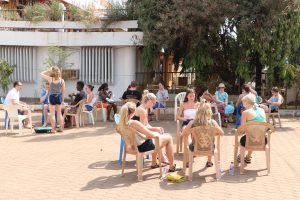
Others factors made women preferred to men, for they were less Lilley to escape, and did more work than most men. women also provided a sense of family cohesion, which was manipulated by their masters to keep slaves from escaping. Women slaves were less likely to escape due to the fact that they were removed from any familial ties and had no home or community to escape to. Women also had less social mobility and economic freedom because female slaves made little to no money for their work compared to men who were able to make an income and potentially move upward within the household. Additionally, sexual exploitation was more prevalent for female slaves. Despite their marital status, female slaves bodies would be offered up to male guests, children of the masters, and even the masters themselves without consent. Additionally, when raiders would enter villages, males would tend to fight back causing a higher rate of injury and/or death among males, where as females typically would not. Because of this, in South Sudan there were a significantly higher amount of female slaves. The class excited for the opportunity to learn about an intersection not usually talked about in the discussion of slavery within Africa.
Later that morning, a local seller named Vida came to our hotel to show us her traditional smock fabrics, that are made by looms. The woman kindly dressed some of us up in the traditional Dagombas clothes, and a few of us made purchases. Others tried on some of the clothes.

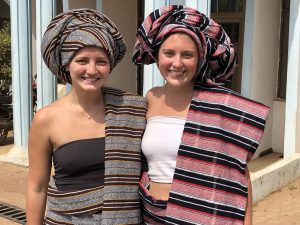
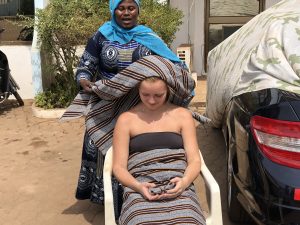
We spent the afternoon at the Tamale Cultural Tours Youth Home, where we were entertained by local dancers.
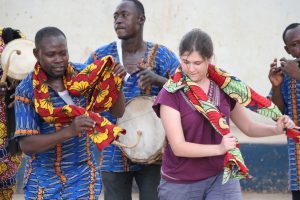
The Youth Home has a mission to use indigenous music as a tool for social change. The first dance they performed was called the Jerah dance, that reenacted a hunting scene.
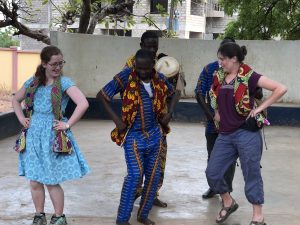
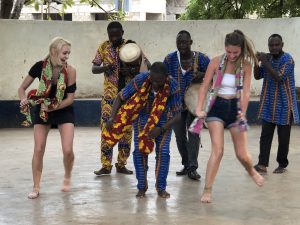
We were also extremely impressed by their skills and elaborate outfits.
The second dance was called Olenge, which is typically a social dance performed in the Savannah region during special occasions like weddings, funerals, or birthday celebrations. This dance also used as a mechanism to promote social cohesion among societies. Before the third dance, one of the men gave us the opportunity to try out some traditional steps.
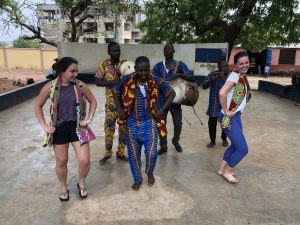
They split us into pairs and we got a good laugh out of seeing each other out of our comfort zones.
The third dance was called the Bamaya. Originally this dance was performed by women, as a celebration of the rainfall after a dry season, but it later shifted to a dance done solely by men. Because of this, the men performing the dance were dressed in skirts to depict women.

After the dancing, we took a look around a shop also affiliated with the youth home. There, we learned that all of the items there were handmade by single mothers and kids within the community.
A lot of us ended up making purchases to support the local artists. Also, many of us joined in a pickup game of volleyball where we got the opportunity to interact with some local kids.
After our visit, we had a free evening and got dinner at our usual spot in town.
Maggie, Tina, Mac, and Clara
